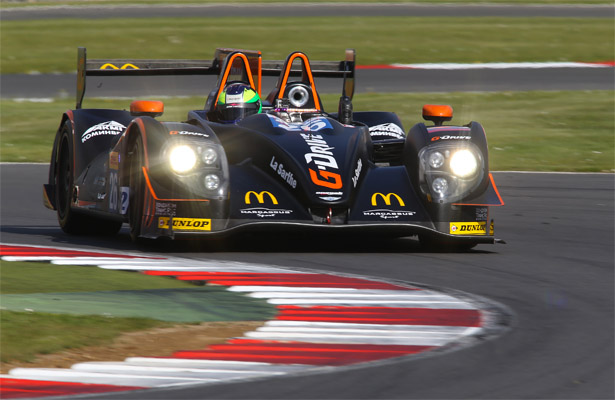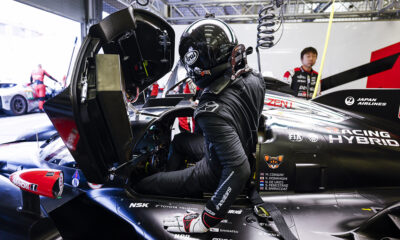
Photo: Onroak/DPPI
With a dwindling car count, OAK Racing team principal Philippe Dumas has voiced his concerns over the future of the LMP2 category in the FIA World Endurance Championship. (En Français)
Following the withdrawal of the two Millennium Racing Oreca 03 Nissans and the delay of the new Strakka-Dome S103 Nissan, there are currently only four full-season entries in the cost-capped prototype ranks.
While next month’s 24 Hours of Le Mans will see a bumper 18-car class, Dumas has questioned the car count for the remainder of the season, with additional and existing entries believed to be in flux.
“We must reflect on the LMP2 category,” Dumas told Endurance-Info. “With a World Championship, it becomes increasingly difficult attract gentlemen drivers who have a job outside of racing.
“In addition, the driver categorization is a problem for some drivers. Certainly, there are only four cars at the moment, but the level of competition is still there. However, [the costs] do not encourage teams to come.”
The OAK-run G-Drive Racing squad claimed victory in the opening two rounds of the championship, with dominant runs by the No. 26 Morgan-Nissan of Olivier Pla, Julien Canal and Roman Rusinov, who largely funds the effort but was upgraded from Silver to Gold driver rating during the off-season.
“I think the driver categorization [rule] should be eliminated,” Dumas said. “You cannot do this alone. We need partners and an additional budget. We must revive the interest of LMP2 with the promoters. Cars exist and everyone can win.
“We also need a real World Championship title in LMP2. Right now, it’s just a FIA Endurance Teams trophy. In addition, the organizer must push manufacturers to put young drivers in cars to help them develop.
“Nowadays, there are many more [similarities] between LMP1 and LMP2, which was not the case a few years ago. We have drivers from GP2, GP3 and other disciplines. They need to be identified by manufacturers. All young drivers do not go to Formula One.”
With the cost-capped price of a LMP2 car expected to rise from $515,000 (without engine) to more than $600,000 due to the arrival of new coupe designs from Ligier, HPD, ORECA and ADESS, budgets are also a concern, although the FIA WEC has made recent efforts to help reduce costs where possible.
“A team cannot reduce costs as the manufacturer,” Dumas said. “A season costs 2.5 to 3 million Euros ($3.5-4.2 million). For example, the tire limit on a weekend is going in the right direction but we need a drastic reduction of operating costs.
“Respecting the cost-capped rules is very complicated to get a good car.”
Dumas feels manufacturers should be able to play a larger role in LMP2, in order to help support the independent constructors and to grow the platform.
“It’s undeniable that there’s some interest in LMP2,” he said. “LMP2 needs to be sustainable, otherwise it will be complicated.
“I am convinced that we can attract young drivers if there is a link with the manufacturers. We could see a junior team, for example.”
While the LMP2 platform has reached a crossroads in the FIA WEC, talks continue for the ACO, FIA and IMSA’s proposed common set of prototype regulations for 2017, which could result in the enforcement of further cost-cutting measures.






















